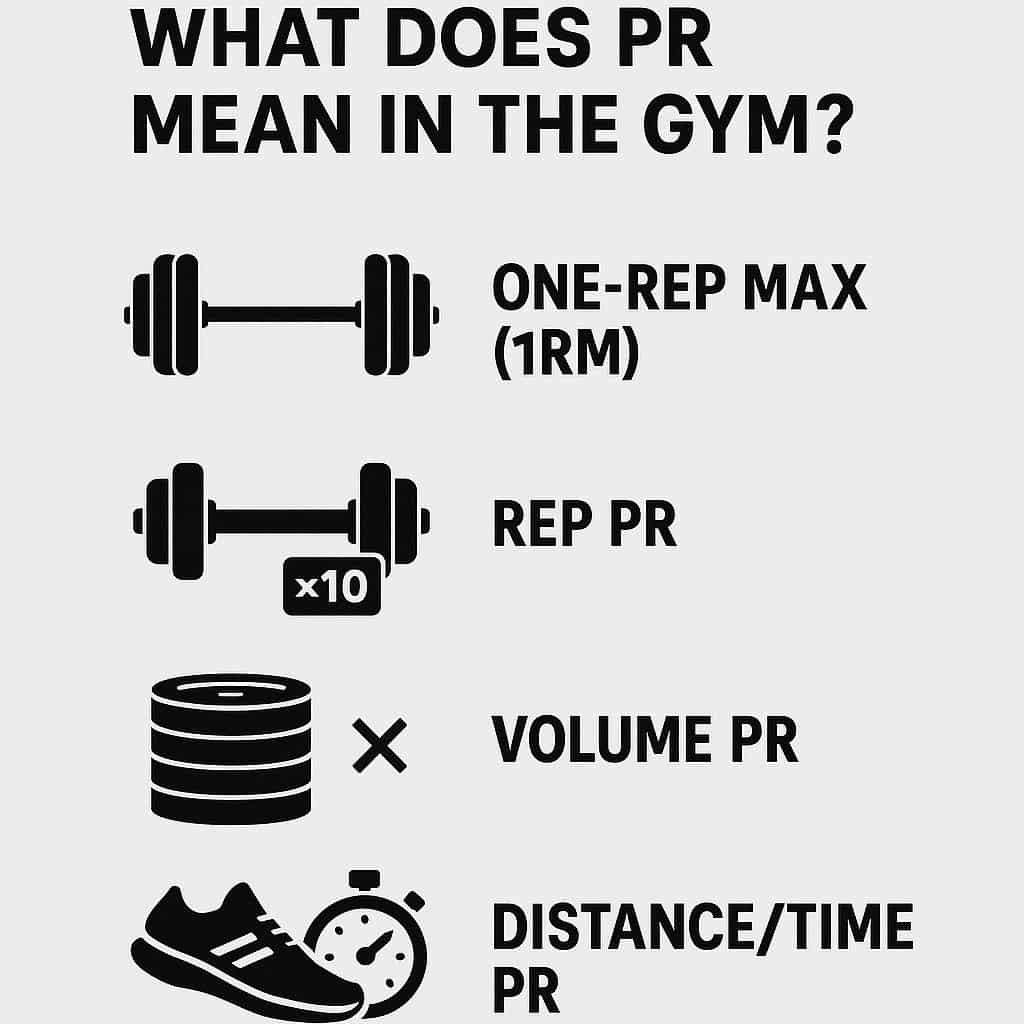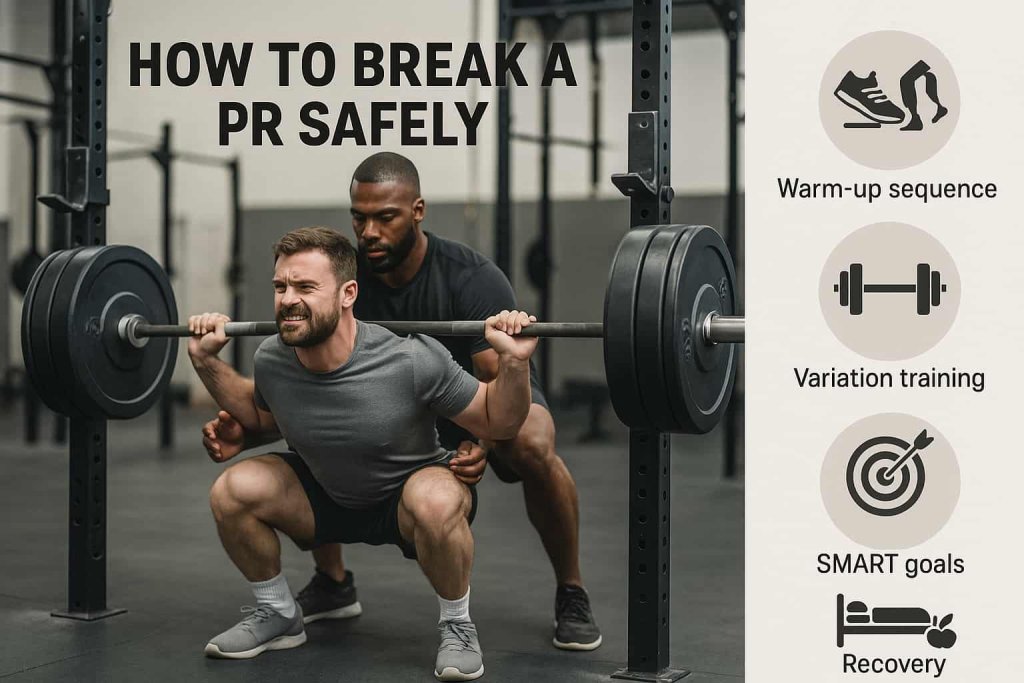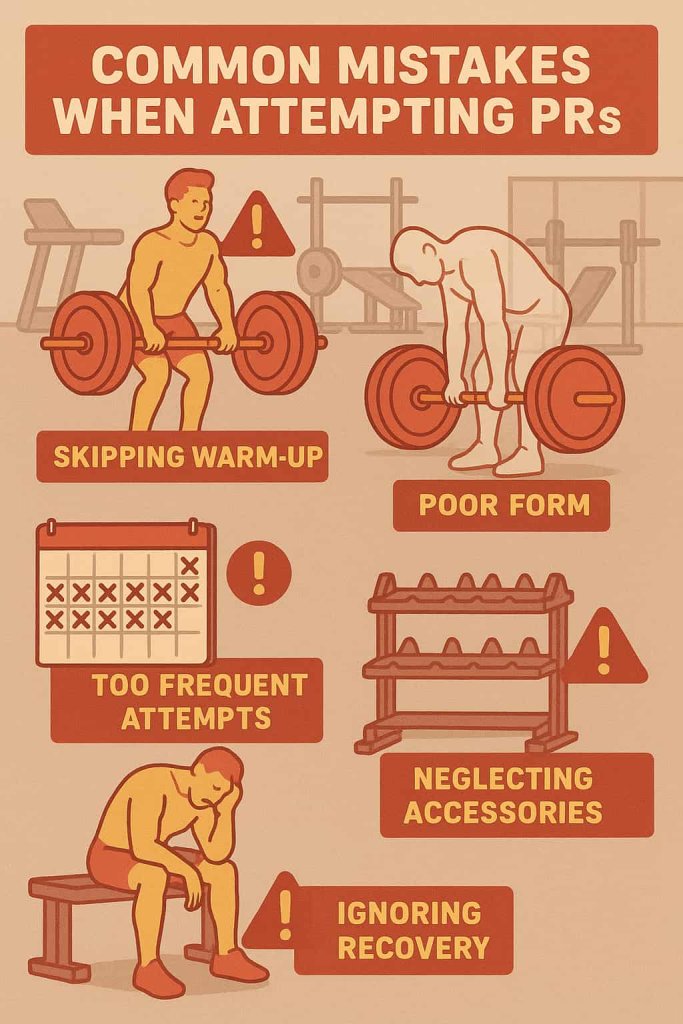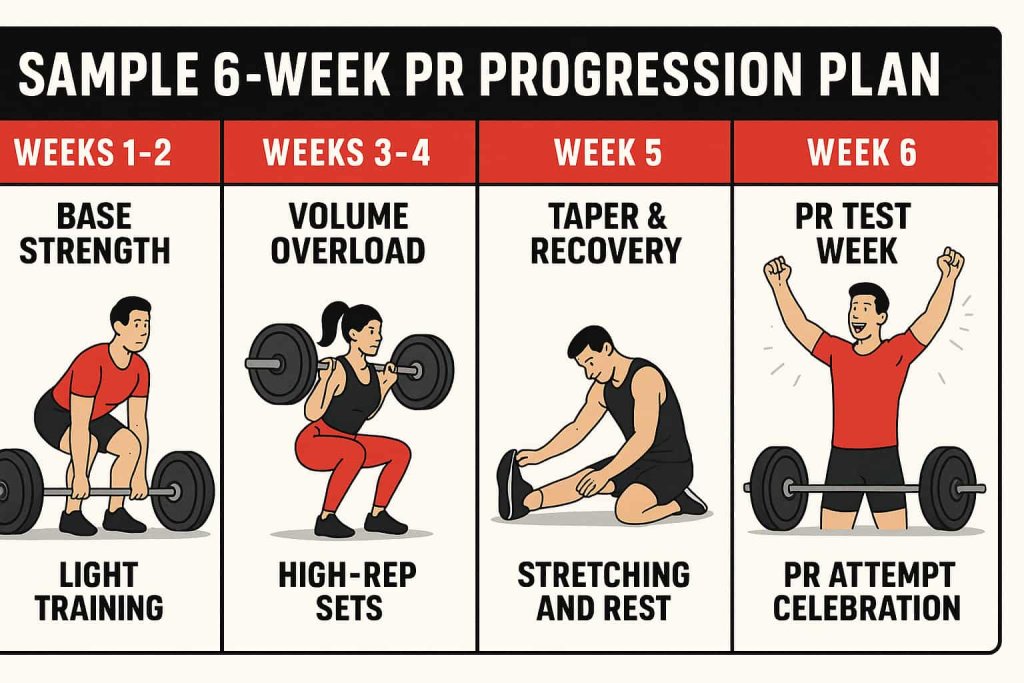In the gym, “PR” means Personal Record — your best-ever performance in a specific exercise, weight, or rep count. Whether it’s lifting your heaviest deadlift, completing more push-ups than ever, or running your fastest mile, a PR is your personal benchmark of progress. Understanding PRs and how to break them is essential for tracking improvement, building confidence, and avoiding training plateaus.

PRs keep your workouts purposeful, motivate you to train harder, and help you measure real, tangible results over time. With the right strategy, you can consistently set new PRs without risking injury — and keep your strength and fitness climbing.
What Does PR Mean in the Gym?
In strength training and fitness, PR (Personal Record) refers to your best-ever performance in a specific movement.

Common examples include:
- One-Rep Max (1RM) – The most weight you can lift for one clean rep.
- Rep PR – Maximum number of reps at a set weight.
- Volume PR – Most total weight lifted in a workout (sets × reps × weight).
- Distance/Time PR – Fastest run, row, or cycle time, or longest distance covered.
Unlike competition records, PRs are personal — they reflect your journey and progress, not anyone else’s.
Why Hitting PRs Matters

1. Tracks Your Progress Clearly
Without benchmarks, it’s hard to know if you’re getting stronger or faster. A PR offers a concrete measure of growth.
2. Boosts Motivation
Breaking a PR gives you a psychological high and reinforces the payoff of your training.
3. Supports Progressive Overload
Attempting PRs forces your muscles to adapt to higher stress — the key to continual strength and muscle gains.
4. Prevents Plateaus
PR testing encourages variety in training and keeps workouts from becoming stale.
5. Builds Long-Term Resilience
Regular PR attempts, when programmed smartly, improve not just strength but also mobility, joint health, and movement quality.
How to Break a PR Safely

Breaking a PR isn’t just about brute strength — it’s about preparation, strategy, and patience.
1. Warm Up Gradually
Work up to your PR attempt in stages:
- Light cardio (5–10 minutes)
- Dynamic stretches for target muscles
- 3–4 progressively heavier sets (50% → 95% of your goal weight)
2. Use the Right Training Methods
Incorporate strategies that strengthen supporting muscles and improve your main lifts:
- Variation training – For a bench press PR, also train incline, close-grip, and dumbbell presses.
- German Volume Training (GVT) – 10×10 at 60–70% 1RM to build size and endurance.
- Supersets – Pair strength and accessory work for efficiency.
- Barbell complexes – String together lifts without rest to build strength under fatigue.
3. Set SMART PR Goals
- Specific – Define the exact lift, weight, or time.
- Measurable – Track progress with numbers.
- Achievable – Push yourself, but stay realistic.
- Relevant – Align with your fitness goals.
- Time-bound – Aim for a target date.
4. Program PR Attempts Properly
- Beginners – Can attempt PRs every few weeks.
- Intermediates/Advanced – Space attempts 8–12 weeks apart for recovery and adaptation.
5. Recover Well
- Prioritize sleep, nutrition, and mobility work.
- Avoid heavy PR attempts when sore, fatigued, or under-recovered.
Common Mistakes When Attempting PRs

- Skipping Warm-Up – Increases injury risk and reduces performance.
- Poor Form – Chasing weight over technique leads to stalled progress or injury.
- Too Frequent Attempts – Can cause overtraining and mental burnout.
- Neglecting Accessories – Weak supporting muscles limit your PR potential.
- Ignoring Recovery – PR progress happens when muscles repair, not just during workouts.
Sample 6-Week PR Progression Plan

| Week | Focus | Notes |
|---|---|---|
| 1-2 | Base Strength Building | Moderate weights, perfect form, accessory lifts |
| 3-4 | Volume Overload | High reps, GVT or supersets |
| 5 | Taper & Recovery | Lower volume, maintain intensity |
| 6 | PR Test Week | Attempt your new PR |
FAQs About PR in the Gym
1. How often should I test my PR?
Beginners can test every 4–6 weeks; advanced lifters should wait 8–12 weeks.
2. Is PR the same as 1RM?
Not always — 1RM is a type of PR, but PRs can also be for reps, time, or distance.
3. Can I break a PR without adding weight?
Yes — more reps at the same weight or faster completion time counts as a PR.
4. Should I always max out on PR day?
No — aim for clean form and safe execution over risky max lifts.
5. What if I fail a PR attempt?
Learn from it, adjust your training, and try again after adequate recovery.
6. Do PRs matter for cardio?
Absolutely — fastest mile times, longest rows, or highest watts are cardio PRs.
7. Can I hit PRs while losing weight?
Yes, but focus on maintenance and technique PRs rather than heavy 1RMs.
Conclusion
PRs aren’t just numbers — they’re proof of your dedication and progress. By training smart, programming your attempts, and recovering well, you can keep breaking limits and building strength year after year.
